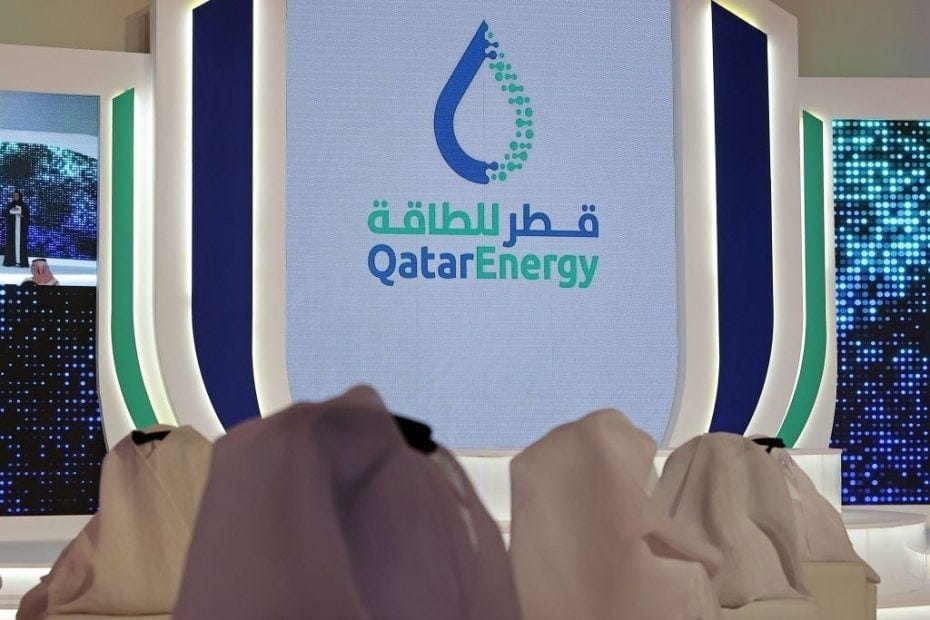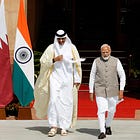Qatar-China Helium Deal: A Strategic Balancing Act
The deal ensures a long-term investment in a critical Chinese sector and can be viewed as a strategic balancing against Doha's increased ties with IMEC countries.
QatarEnergy has signed a deal to supply Chinese Guangzhou Guanggang Gases & Energy Co. Ltd (G-gas) with helium for the next twenty years. The helium will be sourced from Qatar's continuously expanding Ras Laffan helium facility. The long-term sales and purchase agreement (SPA) not only strengthens China’s reliance on Qatari gas but could also be seen as a Qatari investment in Beijing's technological innovation. In the context of Doha's recent $10 billion investment in India, this deal demonstrates the East Asian component of Qatar’s balancing act.
An Investment in China
Over the years, the two countries have cultivated a close and mutually beneficial relationship, driven by their shared interests: Doha’s economic diversification efforts and China’s growing demand for natural gas. Sino-Qatari relations are built on a strong energy trade foundation, with Qatar supplying the People's Republic of China with 90% of its helium needs. The Emirate is also one of China’s largest oil exporters, while China is the biggest export partner for the Emirate. This foundation is constantly built upon, with a fresh Liquefied Natural Gas (LNG) SPA deal signed with Shell to supply China in December.
Last week's SPA further strengthens this relationship and ensures a long-term investment in China. The helium supplied will be of high purity: at 99.9999% purity, it is suitable for specialist applications. This high-quality gas is essential for the development of advanced technologies, including semiconductors, where it is used throughout the manufacturing process. A recent report by IDTechEx concluded that global demand for the gas will ‘increase by five-fold’ by 2035. As such, the deal can be seen as a Qatari investment in Chinese technology, offering support to Beijing in the global artificial intelligence race. The move, though subtle, complements Saudi Arabia’s recent efforts to diversify its AI portfolio through investments in DeepSeek, Lenovo, and Alibaba in response to the DeepSeek shock.
India-China Calculations
The SPA is part of Doha’s broader balancing act, carefully navigating its relations with both China and India amidst the fluctuating India-China geopolitical rivalry, while also preparing for potential economic and political shocks arising from the policies of US President Trump. Trump’s recent remarks during his India trip, as well as his administration’s stance on Syria and Lebanon joining the Abraham Accords, have made an IMEC future more realistic. The fact that this SPA was announced within a week of the $10 billion investment and strategic partnership with India suggests a careful calculation: Doha wants to secure a position within global trade routes. However, it won’t do so brazenly. There is a clear attempt to keep the balance by heavily investing in both India and China’s futures.
In conclusion, QatarEnergy's long-term helium deal with China not only deepens the economic ties between the two nations but also reinforces Qatar's strategic role in bolstering China’s technological progress and energy security. As the Emirate seeks to diversify its economy and reduce reliance on oil, an investment in Chinese tech represents a strategic investment in Qatar's future. As Chinese technology increasingly fills the roads with electric cars and finds its way into the hands of Qataris, Beijing becomes an integral part of daily life in the Emirate. The India factor is unlikely to disrupt this relationship, and Qatar stands to benefit from a continuous, delicate balancing act.





